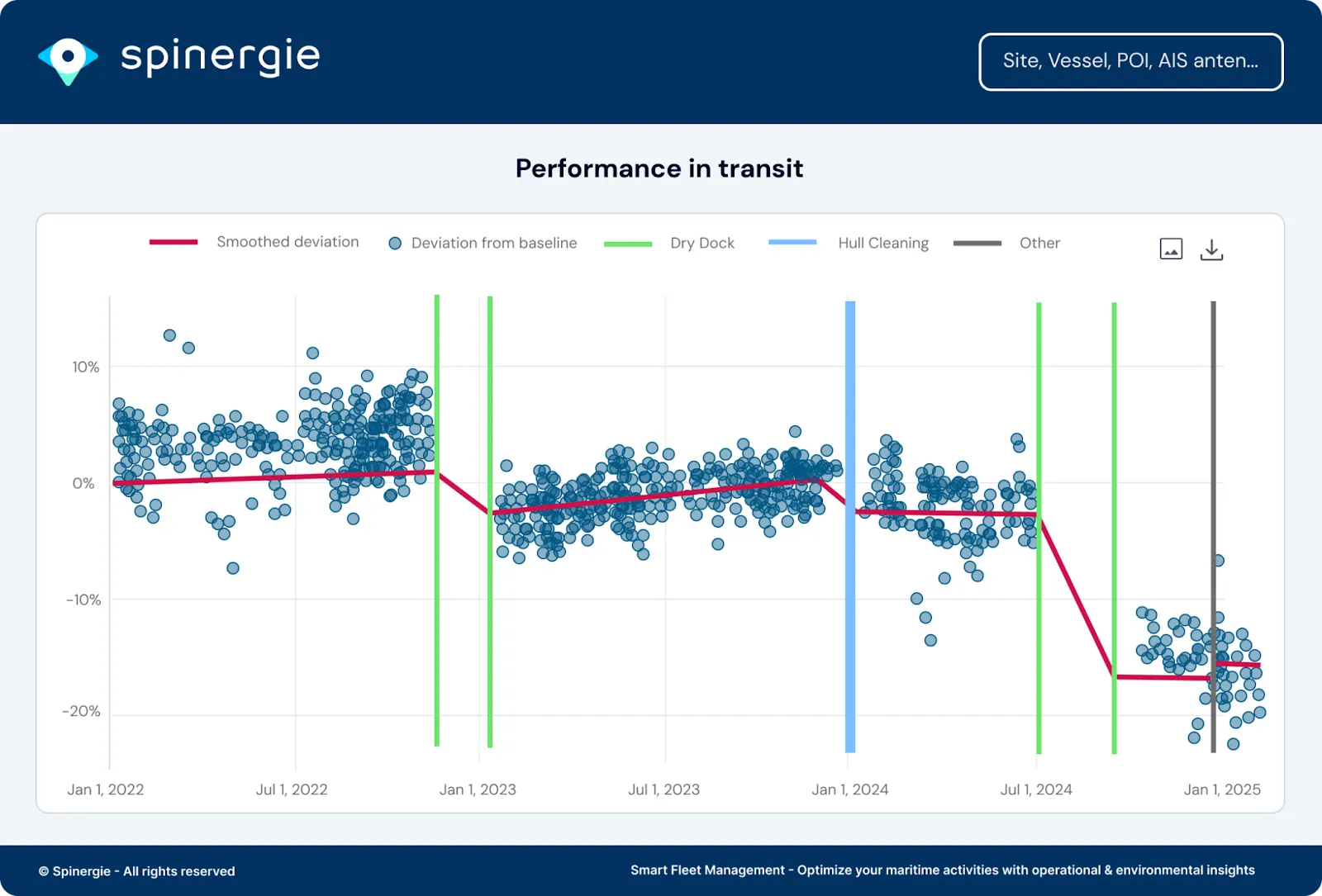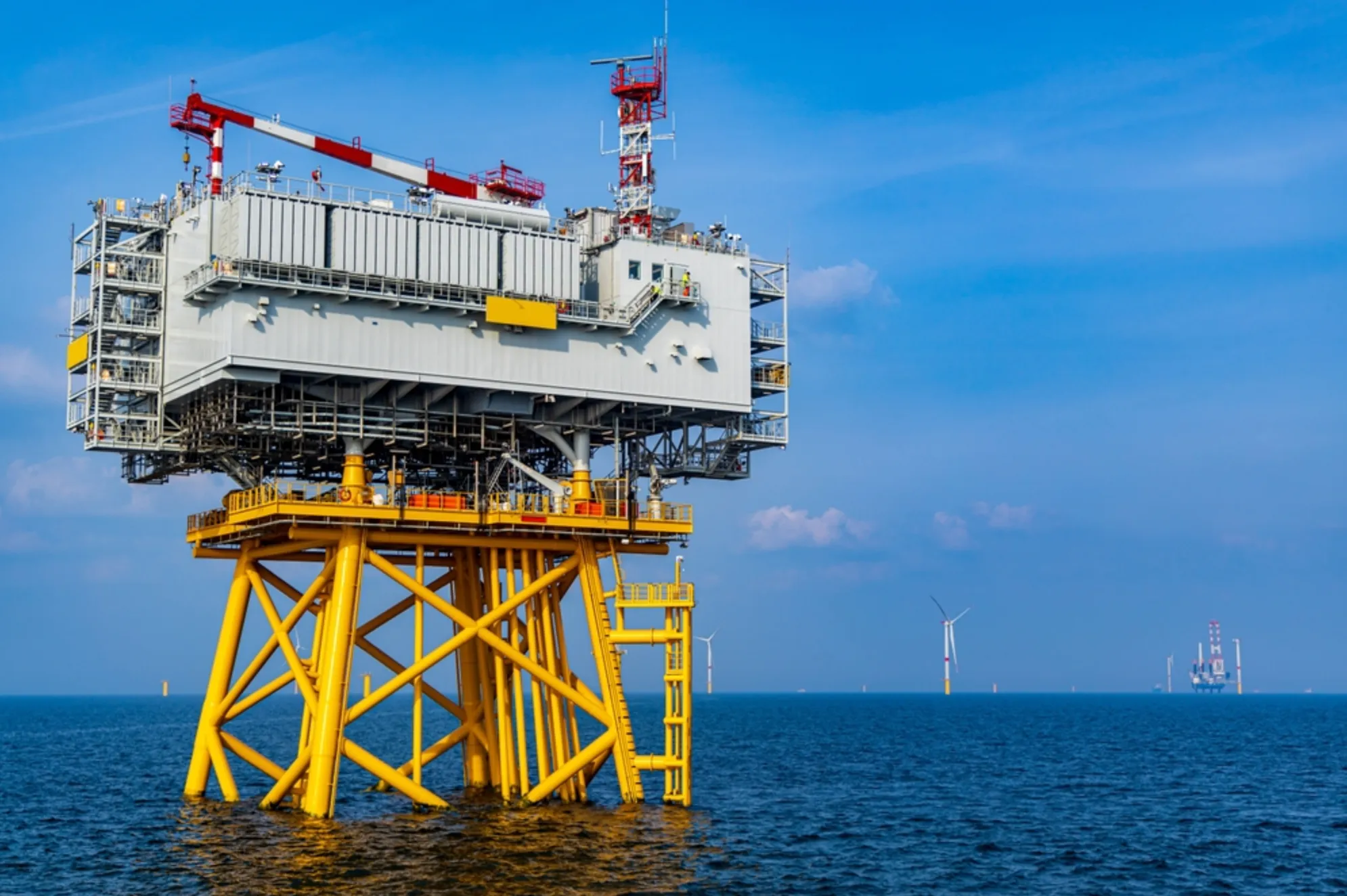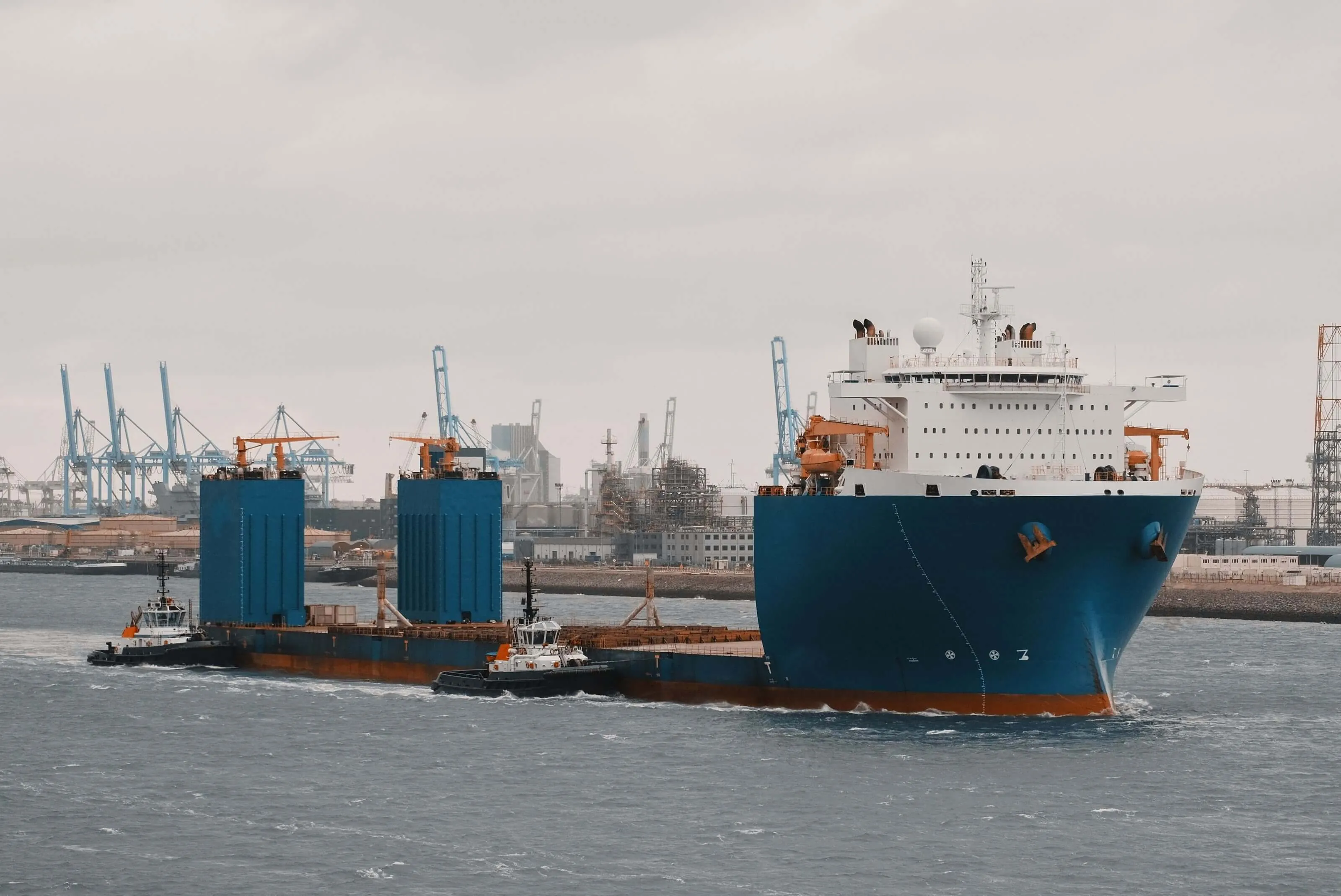The maritime transport sector sees vessels operate on fixed routes with tight turnaround times. So it’s valuable for shipowners to understand even the most subtle changes in efficiency. This is because even small variations in daily consumption can lead to substantial cost implications across the fleet.
Core to Spinergie’s Vessel Performance module, Performance Over Time (POT) addresses these challenges. It differentiates from many market offerings by creating a normalized baseline model that filters out the influence of speed, weather and draft. The resulting performance deviation isolates the true technical performance of a vessel. This enables shipowners to measure how maintenance, lay-up periods or operational changes impact fuel efficiency. With this knowledge they can make better choices for cost reductions and sustainability.
Context
Spinergie’s client, a passenger and freight transport company with multiple ships, serves a number of regional maritime routes.. They were looking to optimize their maintenance schedules with a more data-driven strategy.
Challenge
The operations team knew that hull fouling was a major cause of fuel inefficiency. However, it was difficult to understand the full impact of major maintenance programmes. Most performance monitoring solutions fail to account for external variables such as weather, draft or speed, and this makes it difficult for operators to identify the true effects of maintenance events or performance degradation.
They also wanted to gain a better understanding of what operational factors influenced efficiency gains or degradation, and the efficiency impact of lay-up periods.
The clients core needs:
- To justify the ROI of their maintenance activities.
- To identify when vessel performance has degraded enough to warrant intervention.
- To plan maintenance around operational schedules.
Case Study 1—Measuring maintenance impact
Understanding the factors influencing the reduction in average fuel consumption that occurred after drydocking.
The client’s ship entered a drydock period of approximately 1.5 months for hull cleaning alongside additional modifications including: bulb reprofiling, blade replacement and silicone paint.
Using POT, the three months following the drydock period were observed. This observation showed that there was an average 20% reduction in fuel consumption during transit due to multiple factors: operational choices (speed), weather conditions, and improved technical performance from the maintenance and upgrade programme.
Key Points:
- By analyzing the speed/consumption curves, a drop from 17.6 to 17 knots was observed in the post-maintenance period. This correlates to a consumption reduction of approximately 6% (from 56.3m3/day to 51.9m3/day).
- Technical performance analysis, which excludes speed and weather impact, showed a 12% improvement in transit due to the maintenance and upgrade programme.
Therefore, POT showed that within the 11.2 mT/day reduction:
- 4.5 mT/day was from speed reduction (~8% reduction).
- 6.7 mT/day was from technical performance improvement (~12% reduction).
This scenario allowed the operations management team to identify the true impact of maintenance events on consumption. Using this information they were able to justify their maintenance decisions and optimize their planning schedules across the fleet.
Case Study 2—Measuring operational impact
Understanding why average fuel consumption increased after a drydock period, in order to leverage the benefits of planning a drydock to reduce fuel consumption.
For a different ship, two similar time periods were compared in this analysis: July-August in Year One and July-August the following year (Year Two).
Over this time period there was a 2% average increase in fuel consumption during transit. This could be attributed to: operational choices (speed), weather conditions and deterioration of technical performance.
Key Points:
- Consumption while in transit rose from 137.1 mT/day to 139.5 mT/day between Year 1 and Year 2.
- Analysis of the speed/consumption curves showed a decrease of 22.6 to 22.1 knots between Year 1 and Year 2. This implied a consumption decrease of approximately -5%.
- Technical performance analysis showed a deterioration of 7% from Year 1 to Year 2 in consumption in transit (excluding speed and weather impacts).
Therefore, POT, showed that, of the 2.4 mT/day increase:
- -6.8 mT/day was from the speed reduction of ~5%
- +9.2 mT/day was from the degradation of technical performance ~7%.
This scenario shows that POT allows users to identify the impact of the degradation of technical performance on consumption to better optimize maintenance event planning and reduce consumption.

Case Study 3—Measuring the impact of out of service time
Understanding the impact of a lay-up period.
The client wanted to understand how impactful a layup period of approximately three months was on the fuel consumption of one of their ships.
Using POT, they could see a degradation of 3% compared to the overall baseline, and a degradation of 5.1% compared to the baseline without activity. This represented a 2% increase in fuel consumption.
Key points:
- With an average speed of 21.3 knots during post-layup transit, there was a 2% increase in fuel consumption. This represents 2.6 mT/day of additional fuel.
- With an estimate of €600 per ton, over 120 days of transit, there were approximately €190,000 in additional costs over four months due to deterioration during the layup period.
An assumption could then be made that scheduling a hull cleaning at the end of a layup period would be a good choice to negate the consumption impact.
Result
POT equips shipowners with a reliable, quantitative understanding of how their vessels’ efficiency evolves. This helps them better strategize their maintenance schedules in order to optimize fleet performance, reduce emissions and ensure continued operational efficiency.
Using POT, the client has data-based insights that show the true impact of each maintenance event instead of relying on assumptions. This aids confident decision making around the timing of hull cleanings or upgrade programs.
The client can now also recognize when a vessel’s efficiency has declined enough to justify intervention. This allows them to proactively plan maintenance to ensure losses are minimized and reliability remains high.
Furthermore, the transparency and precision provided by POT have strengthened trust between us and the client. By turning complex performance data into clear, evidence-based analysis, we have become their trusted partner in driving measurable efficiency.
Stop guessing about vessel efficiency. Book a demo and see how Performance Over Time reveals the true impact of your maintenance and operations.
Our team will show you exactly how we can adapt the solution to your needs.


.webp)


